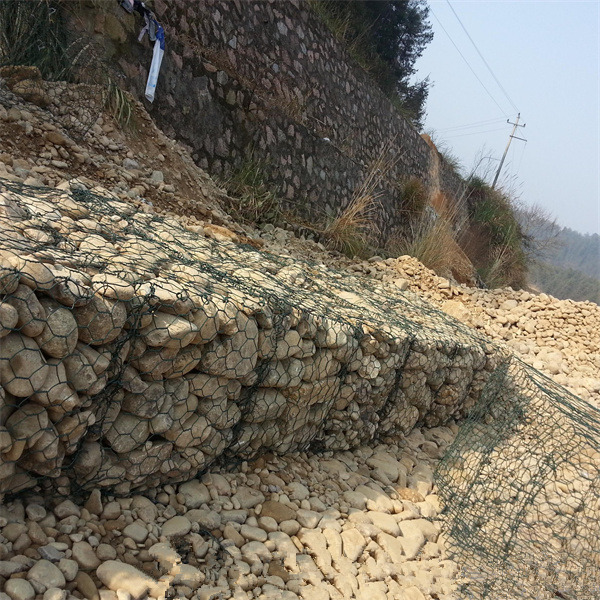Oct . 14, 2024 13:48 Back to list
gabion wall thickness factory
Understanding Gabion Wall Thickness and Its Importance in Construction
Gabion walls have become increasingly popular in civil engineering projects, particularly in landscaping, erosion control, and retaining wall construction. These structures, made of wire mesh cages filled with rocks or other materials, offer numerous advantages such as versatility, cost-effectiveness, and environmental sustainability. However, one of the critical factors that determine the effectiveness and durability of a gabion wall is its thickness.
What is a Gabion Wall?
A gabion wall is essentially a flexible and permeable structure formed by filling wire mesh baskets or cages with stones, gravel, or other suitable material. The design allows water to flow through, reducing the hydrostatic pressure behind the wall while providing excellent support and stability. Gabion walls are often used to prevent erosion on riverbanks, act as noise barriers, or even serve as architectural features in landscape design.
Importance of Thickness in Gabion Walls
The thickness of a gabion wall plays a pivotal role in its structural integrity and overall performance. Here are several key reasons why wall thickness is crucial
1. Load-Bearing Capacity Thicker gabion walls can better withstand heavy loads, especially in applications such as retaining walls. The increased thickness provides additional mass and stability, allowing the wall to resist lateral earth pressures effectively.
2. Durability The thickness of the wire mesh used to construct the gabion cages also affects the wall's durability. Thicker mesh materials can resist corrosion and damage from environmental factors, ensuring the longevity of the wall. This is especially important in areas with extreme weather conditions.
3. Erosion Control In applications where gabion walls are used for erosion control, thickness can significantly affect the wall's ability to absorb and dissipate energy from water runoff. A thicker wall has a larger surface area to absorb the impact of flowing water, reducing the likelihood of washouts.
gabion wall thickness factory

4. Aesthetic Appeal The thickness of a gabion wall can also influence its visual impact. Thicker walls can lend a more robust appearance, making them suitable for various architectural styles. Designers often consider thickness when creating features that integrate seamlessly into the landscape.
5. Design Considerations Various factors influence the optimal thickness of a gabion wall, including soil type, slope stability, and loading conditions. Engineers typically conduct thorough soil analysis and hydrological studies to determine the appropriate wall thickness for specific applications.
Recommended Thickness Guidelines
While the ideal thickness of a gabion wall can vary depending on the specific design and site conditions, general guidelines suggest the following
- Standard Applications For typical landscaping and erosion control, a minimum thickness of 2 to 3 feet is often sufficient. - Retaining Walls For walls designed to retain soil in hilly or sloped areas, thicknesses of 3 to 5 feet—or even greater—may be required, depending on the load. - Bank Protection When used along riverbanks or shorelines, gabion walls should be appropriately sized based on flow velocities, with recommended thicknesses above the minimum standards.
Conclusion
Gabion walls represent a versatile and effective solution for various civil engineering challenges. Understanding the significance of wall thickness can enhance the performance, durability, and aesthetic appeal of these structures. When designing a gabion wall, it's essential to consult with engineers and use proper guidelines to ensure that the wall is capable of withstanding the specific conditions it faces. By paying careful attention to wall thickness, builders can create resilient structures that meet both functional and aesthetic requirements, contributing to sustainable and stable landscapes.
In a world increasingly focused on eco-friendly construction methods, gabion walls remain a practical choice, provided that their design incorporates careful planning and precise specifications regarding thickness.
-
Visualizing Gabion 3D Integration in Urban Landscapes with Rendering
NewsJul.23,2025
-
The Design and Sustainability of Gabion Wire Mesh Panels
NewsJul.23,2025
-
The Acoustic Performance of Gabion Sound Barriers in Urban Environments
NewsJul.23,2025
-
Mastering the Installation of Galvanized Gabion Structures
NewsJul.23,2025
-
Gabion Boxes: Pioneering Sustainable Infrastructure Across the Globe
NewsJul.23,2025
-
Custom PVC Coated Gabion Boxes for Aesthetic Excellence
NewsJul.23,2025
-
Installation Tips for Gabion Wire Baskets in Erosion Control Projects
NewsJul.21,2025






